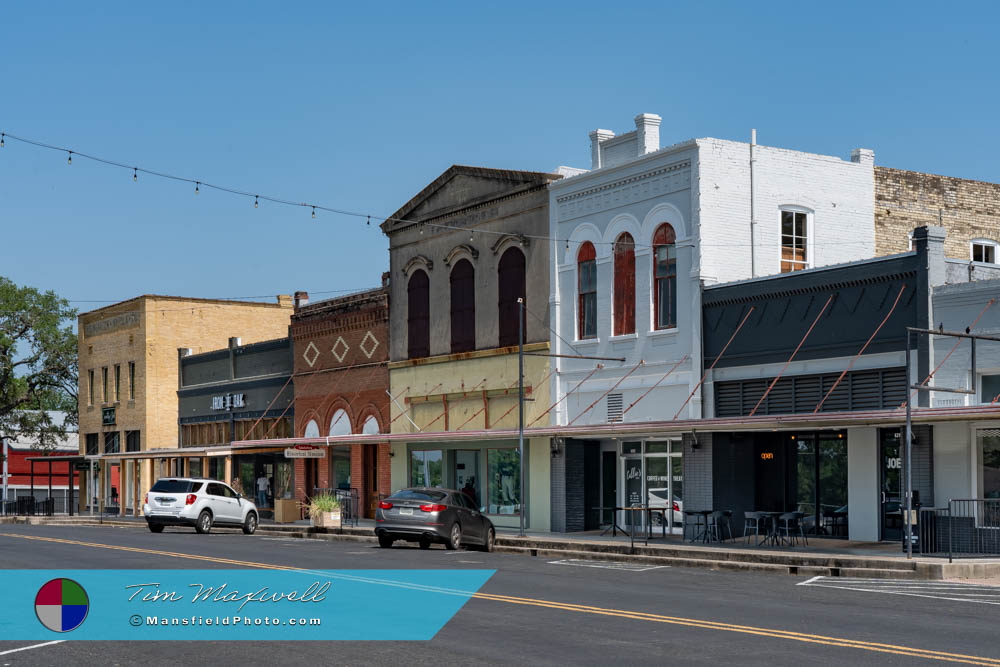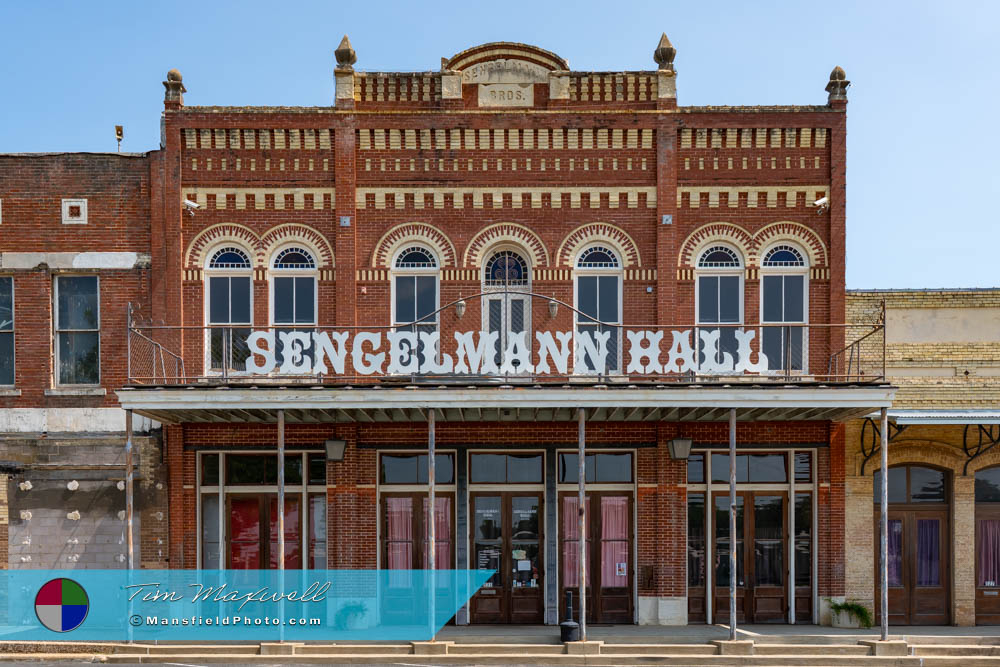Mansfield Photography
Schulenburg, Texas
– Where History Dances.
It’s not the biggest town in Texas, nor the flashiest. But there’s something about Schulenburg that makes it linger in the memory longer than most. Maybe it’s the way tradition and architecture have been preserved like a well-loved quilt, with every building and backroad telling a story. Maybe it’s the clang of polka music from a summer picnic, or the brushstroke beauty of nearby country churches painted by hand a century ago. Whatever the reason, this town doesn’t demand attention—it earns it.
How It All Began
The town traces its founding to 1875, a time when the railroads were changing everything in Texas. When the Galveston, Harrisburg and San Antonio Railway came through, a new depot was established here, leading to the relocation of businesses and families from the nearby settlement of High Hill. As a result, a new townsite formed around the tracks, and it was named after Louis Schulenburg, a local landowner and donor to the railroad. The arrival of the train transformed the area almost overnight, creating a regional hub for agriculture, trade, and culture.
The Cultural Blend
German, Czech, and Austrian immigrants gave the town its flavor early on—culinary, architectural, and musical. You can still hear polka music playing from time to time, whether at a church picnic or on a jukebox in a local cafe. Traditions that many towns have forgotten remain alive here, passed down through generations. The blend of languages may have faded, but the influence remains in the kolaches, hand-painted signage, and love for dancehalls.
A Town of Painted Churches
One of the most compelling reasons people make the journey to this part of the state is to visit the painted churches scattered throughout the countryside nearby. Built by Czech and German immigrants in the late 1800s and early 1900s, these churches may appear modest from the outside—but step inside, and they’re filled with ornate frescoes, gold-leaf detailing, and elaborate faux-finish painting techniques. Among the most visited are St. Mary’s at High Hill and St. John the Baptist in Ammannsville. The churches are a testament not only to faith, but to the artisanship and pride of early settlers.
Downtown That Time Didn’t Forget
Walking the downtown district feels more like stepping into a living photograph than a museum. Nearly all the historic buildings remain in use today, home to antique shops, restaurants, small businesses, and local offices. Their façades wear their history well, restored but never overly modernized. It’s easy to imagine how the streets must’ve looked in the early 1900s, only now there’s better coffee.
One of the visual standouts is a beautifully restored Sinclair gas station. No longer in operation as a fuel stop, this station has been converted into a vacation rental. With its green and white tiles and nostalgic design, it brings a fresh life to an old structure, merging past and present in a way that feels both fun and respectful.
Sengelmann Hall: A Dancehall Reborn
Of all the buildings downtown, few carry as much history as Sengelmann Hall. Built in 1894 by the Sengelmann brothers, the two-story structure quickly became the center of town life. It hosted dances, social events, and live music for nearly fifty years before closing as World War II began. Like many historic halls in Texas, it eventually became a hardware store—in this case, a Western Auto. Later, it sat dormant for decades.
But in 2009, the grand old hall reopened. Thanks to a meticulous restoration, it returned as a bar, restaurant, and event venue under the stewardship of Garrett Pettit. For over a decade, it provided a stage for live music, weddings, and weekend diners. Though it recently closed again, the hope remains strong among locals and travelers alike that its doors will open once more.
A Picnic Tradition That Brings Everyone Together
Every second Sunday of June, the town comes alive with the annual St. Rose of Lima picnic. Held on the grounds of the Catholic church, it’s a celebration of food, family, and community. The air fills with the aroma of barbecue and homemade pastries, while a raffle, auction, and music bring the crowds together. It’s one of those events that blends sacred and secular life, serving as both a fundraiser and a joyful reunion.
Not Just a Place, but a Feeling
This town may be small, but it refuses to fade. Its schools, churches, and businesses remain the heartbeat of the community. Tourists come through for the painted churches or the Sinclair station, but what makes them return are the quiet streets, honest hospitality, and the sense that time moves just a little differently here.
It’s a place where history isn’t something behind glass, but something still lived. A place where preservation is not about freezing the past, but honoring it while moving forward. Whether you’re drawn by heritage, architecture, or simply the desire to walk down streets that have mattered for generations, Schulenburg answers the call—without ever needing to raise its voice.
📸 Interested in More Photos of This Town?









